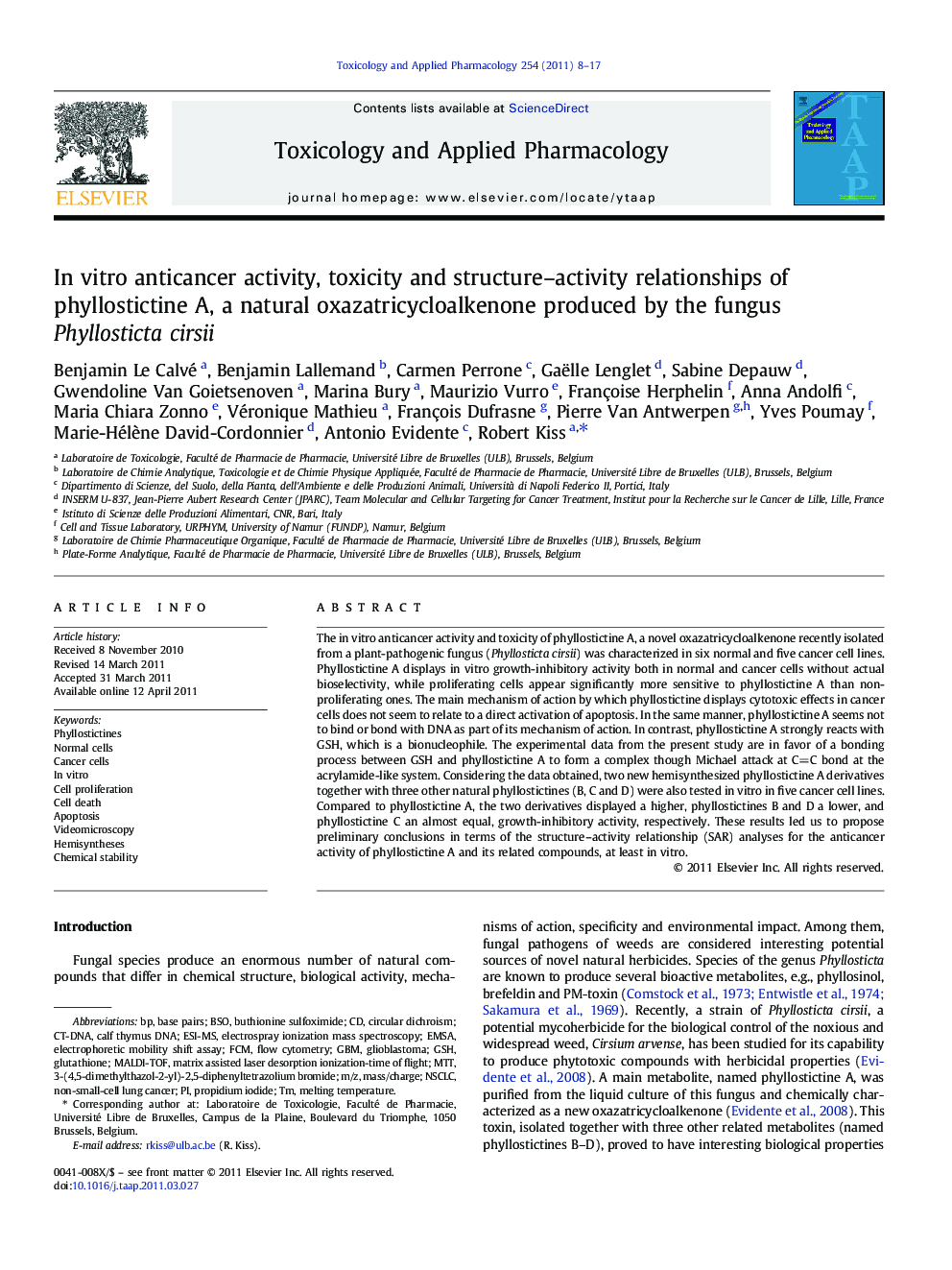| Article ID | Journal | Published Year | Pages | File Type |
|---|---|---|---|---|
| 2569354 | Toxicology and Applied Pharmacology | 2011 | 10 Pages |
The in vitro anticancer activity and toxicity of phyllostictine A, a novel oxazatricycloalkenone recently isolated from a plant-pathogenic fungus (Phyllosticta cirsii) was characterized in six normal and five cancer cell lines. Phyllostictine A displays in vitro growth-inhibitory activity both in normal and cancer cells without actual bioselectivity, while proliferating cells appear significantly more sensitive to phyllostictine A than non-proliferating ones. The main mechanism of action by which phyllostictine displays cytotoxic effects in cancer cells does not seem to relate to a direct activation of apoptosis. In the same manner, phyllostictine A seems not to bind or bond with DNA as part of its mechanism of action. In contrast, phyllostictine A strongly reacts with GSH, which is a bionucleophile. The experimental data from the present study are in favor of a bonding process between GSH and phyllostictine A to form a complex though Michael attack at C=C bond at the acrylamide-like system. Considering the data obtained, two new hemisynthesized phyllostictine A derivatives together with three other natural phyllostictines (B, C and D) were also tested in vitro in five cancer cell lines. Compared to phyllostictine A, the two derivatives displayed a higher, phyllostictines B and D a lower, and phyllostictine C an almost equal, growth-inhibitory activity, respectively. These results led us to propose preliminary conclusions in terms of the structure–activity relationship (SAR) analyses for the anticancer activity of phyllostictine A and its related compounds, at least in vitro.
